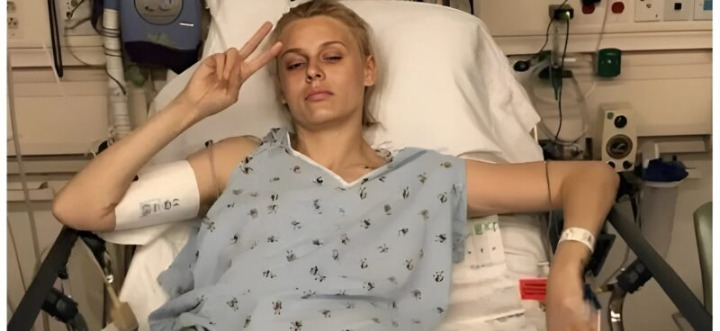Emily Carter was living the life of a hardworking single mom in Texas. Known for her determination and optimism, she balanced a demanding job, cared for her two young children, and still found time to dream about a better tomorrow 🌟.
But in the middle of an ordinary summer afternoon, everything took a devastating turn. While tidying her home, Emily decided to try a new cleaning product that was heavily advertised as “the safest on the market” 🧴✨. It promised powerful cleaning without harmful chemicals—something she believed would protect her family’s health.
Moments after scrubbing her kitchen floor, Emily noticed an unusual tingling sensation in her legs. At first, she assumed it was simple fatigue from standing too long. However, that tingling quickly escalated into an intense burning pain that refused to fade.
Over the next few days, her symptoms worsened dramatically. Her legs became swollen, her skin turned a troubling shade, and she found herself struggling to walk. Fearing the worst, Emily rushed to the emergency room.
There, doctors delivered the heartbreaking diagnosis: the “safe” cleaning product had triggered an extremely rare allergic reaction, causing tissue necrosis—a condition where body tissue begins to die. Immediate intervention was necessary to save her life 💔💉.
Despite the medical team’s efforts, the damage was irreversible. Emily underwent surgery that resulted in the loss of both legs. In a matter of days, her world had been turned upside down.
Now, from her wheelchair, Emily is speaking out. She wants her tragedy to be a warning for others: even everyday household products—no matter how harmless they seem—can hide dangerous ingredients. She urges consumers to always read labels carefully, perform patch tests, and research unfamiliar brands before bringing them into their homes.
Her story has gained attention nationwide, sparking conversations about product safety, stricter regulations, and the importance of transparency from manufacturers.
Emily refuses to let this tragedy define her. With the same resilience that once kept her juggling life’s challenges, she is learning to walk again with prosthetics, advocating for safer household products, and reminding people that one moment of caution can prevent a lifetime of pain.
Emily’s life was turned upside down in a way she could never have imagined. Sitting in the stark white hospital room, she heard the words no one ever expects: both of her legs would need to be amputated—and the surgery had to happen immediately to save her life.
At just 31 years old, she suddenly faced a future she had never prepared for. “It felt like my dreams were crushed in an instant,” Emily recalled, her voice trembling. In that single moment, the vibrant, independent woman who once ran after her kids in the backyard was now confronting an entirely new reality.
The weeks that followed were some of the darkest of her life. Emily battled waves of grief, spiraling depression, and a deep, gnawing guilt. She replayed the events over and over in her mind, wondering if she could have done something—anything—to prevent it.
Every morning, she woke up and stared at the empty space where her legs used to be. The questions haunted her: How will I care for my children? Will they still see me as their strong, unstoppable mom? Will they still think of me as their superhero 🦸♀️?
Friends and family rallied around her, but even their love couldn’t erase the fear of the unknown. Emily knew she had to rebuild her life from the ground up—physically, emotionally, and financially. But in those early days, the path forward felt impossibly steep.

In the months after her life-changing ordeal, Emily refused to let tragedy silence her. Once she had regained enough strength, she made a bold decision—she would turn her pain into purpose.
She began speaking out about her experience, determined to warn others about the dangers hidden in everyday household products. At first, it was just small posts on her personal social media pages, where she urged friends and family to read ingredient labels and research products before use. But those posts quickly gained traction, spreading far beyond her immediate circle.
Soon, Emily was invited to share her story on local news segments, podcasts, and eventually national television. With every interview, her voice grew stronger, her message clearer: “If this could happen to me, it could happen to anyone. We deserve transparency and safety in the products we use at home.”
Her heartfelt warnings resonated with millions of women across the country—mothers, daughters, and caregivers who had never considered that a “safe” or “eco-friendly” cleaner could carry hidden risks. Many reached out to Emily to thank her for opening their eyes, and some even shared their own stories of mysterious health issues linked to household items.
What began as a personal nightmare became a nationwide conversation. Emily’s courage and vulnerability were not only saving lives but also pushing for change in product safety regulations. 💬📢

